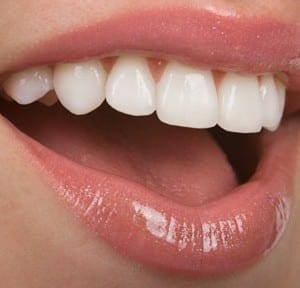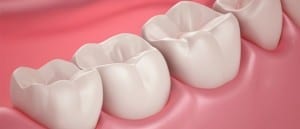Amalgam is a dental filling solution to fill out cavities or the gaps between broken teeth with material more durable than tooth-colored composite filling. It’s less likely to break under biting pressures, but it’s considered a bit of a hazard to remove when it is compromised due to its mercury content, thus necessitating safe amalgam removal. Also known as silver fillings, concerns have been raised on the safety of silver fillings over the years thanks to it using mercury (which is the substance that makes it malleable enough to be shaped and put in the holes of your teeth before it hardens to steel-like quality afterwards).
Common Questions Regarding Dental Amalgam
Here are the most frequently asked questions in regards to dental amalgam.
What is dental amalgam?

Amalgam has been used for the last 150 years as an effective teeth filling material for any cracks, gaps, and holes on a given tooth enamel or dentin due to dental caries or tooth decay. It’s been around probably longer than the composite tooth-colored material that dentists prefer to use nowadays. It’s mainly utilized on molar teeth or back teeth nearest your throat because it’s colored “silver” and would make your front teeth look terrible plus it’s tough enough to deal with the masticating or biting forces of back teeth.
Even though it’s called silver amalgam, it actually consists of a combination of metals mixed with mercury to make them malleable when placed into the tooth. So it’s an amalgam of silver, copper, tin, and mercury (as well as trace amounts of palladium, indium, or zinc). Tooth-colored materials are now the way to go nowadays, but they tend to break down easier, especially when there’s extensive damage to the tooth (necessitating either amalgam or an outright crown to cover it up).
Why is amalgam not used as much today as in the past?
It was a tough and reliable teeth filling in the past that went hand-in-hand with more expensive and tougher dental restorations like the jacket, veneer, and crown, but its mercury content and learning the effects of mercury on the human body put a halt to its wide use. This is also the reason why safe amalgam removal is also now part of many a dentist’s offered services as well. People don’t only want to use it less often; they also want to have fillings they got as children removed from their mouth for fear of getting poisoned.
However, even though amalgam fillings aren’t used as often as before, it’s still considered an option for those who are aware of its risks and the expensiveness of having it removed in case it gets dislodged and it starts spewing out mercury vapor. What’s more, newer materials can’t be used for all situations (like an extensively broken molar with composite filling that keeps falling out) and amalgam is more affordable compared to other materials, especially with teeth that undergoes high-pressure chewing and wear down.
How safe or unsafe is an amalgam filling?
Millions of people have amalgam fillings. To this day, if composite filling isn’t enough to fill in a tooth and a crown is considered too expensive for tooth restoration, the in-between alternative is going the amalgam filling route, fears of requiring a safe amalgam removal in the future aside. The concerns in regards to amalgam mostly roots from its need to use mercury in order to make the metal malleable enough to fill in holes or cracked in your teeth, like metal cement. Without the mercury, it’s hard to put all that tin, copper, and silver into your holey teeth.
To be more specific, back in 2009, the U.S. FDA (Food and Drug Administration) evaluated the years and years of research and studies in regards to the dangers presented by the trace amounts of mercury in amalgam dental filling. The administration concluded that there’s no reason to limit amalgam usage or to ban it. However, no matter how safe, the FDA claims that these fillings are for children 6 years and up as well as adults, safe amalgam removal remains a popular service. You can’t be too careful. In fairness though, nowadays amalgam is used as a possible last resort for tooth restoration aside from putting on a crown.
Why is mercury used in amalgam?
Only mercury can make the filling material full of metal pliable enough to place into the tooth, then hard enough to take the extreme biting forces of molar teeth (which is usually where it’s placed since it has a distinct gray or black coloring that “ruins” front teeth in an aesthetic sense). Mixing alloy powder with mercury results in an amalgam compound that’s soft enough to mix and press into a tooth cavity.
What’s more, like some sort of dental cement, it hardens rather quickly after application. Unlike its tooth-colored composite counterpart that crumbles under the pressure of molar mastication, the hardened amalgam is metal-tough that can deal with the forces of chewing and biting, even when it comes to chewing gum, hard candy, chips, nuts, or crackers that break the more brittle composite filling apart into pieces.
Why the concern about mercury in amalgam?

Mercury is a dangerous poison to humans when consumed in large amounts. Amalgam fillings are approved by the FDA with the idea that the mercury in them is so miniscule and so inert that they shouldn’t pose much a threat to your system that would necessitate a ban on all amalgam filling operations. However, there are patients and dentists that disagree with this assessment of the FDA, with them wanting to send a motion for reconsideration in regards to the safety of amalgam.
Mercury is a naturally occurring metal that can exist as a liquid or solid. You can find them in thermometers to indicate temperature (the hotter it is the higher the mercury inside the measuring tool rises). When heated, it becomes a gas. It can also be combined with other materials, hence the existence of amalgam filling. However, minute traces of mercury can escape from the filling and go into your system, thus there are some people who wish to remove their childhood mercury fillings safely and replace it with crowns or composite tooth fillings.
How to Safely Remove Mercury Amalgam Fillings
With that said, here are the steps that your dentist will have to follow in order to go about a successful safe amalgam removal.
Keep the Fillings Cool: You can drill out a composite filling out of a tooth with no detrimental side effects. The same cannot be said of amalgam fillings. The reason being is that drilling this filling type releases tremendous heat, which in turn turns the mercury binding the metal powder together from solid to vapor. In the attempt to remove your fillings, you’ll be inhaling mercury vapor and amalgam particles. Air and water should be used in the filling to reduce the amount of mercury released from the filling. Chunking or cutting the filling into chunks, then removing them with a hand instrument or suction is the way to go.
- Use a High-Volume Evacuator: Speaking of the suction system, dentists who practice safe amalgam removal make use of a powerful evacuator suction system in order to go about the process. Pro-amalgam dentists don’t give much of a second thought about the mercury vapors released by the filling, but the anti-amalgam dental contingent care enough to limit your exposure to the deadly vapor and metal particles by using an evacuator tip to suck out the chunks of filling as they’re gradually cut from the teeth they’re resting upon.
- Utilize Better Air Purification: To further limit your exposure to the mercury vapors (while also safeguarding the dentist that’s operating on your mouth and his accompanying assistant), an additional air filtration system is called for. This filter is placed close to your mouth during the amalgam removal procedure. It’s something that looks like an elephant trunk and has openings of about 4 inches in diameter. Some pro-amalgam dentists believe this is overkill while anti-amalgam dentists (and their patients) think otherwise. It’s a reassuring addition to any removal protocol.
- Provide an Alternative Air Source: The filter isn’t an air source for you to help you breathe, though. The amalgam-removing dentist can add more sources for air that will help you breathe while the mercury vapors are being sucked away with chunks of your filling. Dental patients should have another source of air while they’re having their fillings removed. You don’t need the air source after the amalgam removal and placement of new composite material filling. It’s a means for you to breathe the air through your nose and not in your mouth where the amalgam removal process is going on.
- Put on a Rubber Dam: The rubber dam specifically safeguards your inner mouth, gums, other teeth, and tongue to isolate the tooth or teeth that requires amalgam filling removal in the first place. There are mercury-free dentists who believe this is an unnecessary step. However, those who support it believe that it makes it easier to evacuate the amalgam and prevent the particles and mercury vapor from being swallowed after the procedure. It also streamlines the composite filling process, providing a dry field for effortless dental filling action.
- Dispose of Filling Particles Safely: The dentist will then dispose of the filling particles post-haste so as to minimize your exposure to mercury. In this instance, it pays for your dental professional to have an assistant working for him. Although he can conceivably do everything on his own, having someone else place the toxic filling away as he finishes up on his work will shorten the time it takes to go about safe amalgam removal. It’s the assistant’s job to ensure continuous flow of air and water to cool down the filling and constant suction is taking place. This also prevents the dentist from multitasking and increasing the chances for a slip up.
- Clean the Patient’s Mouth Thoroughly: From there, your dentist will either just remove the dam and make sure you spit out any potential particles left over from the operation (there should be zero since the dam is supposed to catch them all) or if you didn’t use the dam, your dentist should make sure to vacuum out and rinse your mouth thoroughly for at least 15 seconds or more. This will significantly reduce the chances for post-operative mercury poisoning. He’ll also have to dispose his gloves and the dental dam since they’ve potentially been contaminated with mercury from the filling as well.
- Remember Additional Cleanup Tips: As a patient, you shouldn’t swallow all throughout the cleanup phase of the safe amalgam removal procedure. The idea here is to vacuum, rinse, gargle, and spit continuously with the help of your dental doctor for 15 seconds straight so as to minimize the possibility of leftover mercury contamination despite of safeguards like gloves and the rubber dam. Once the fillings are replaced, the dentist should then get rid of your protective covering and clean up your neck and face as well since mercury contamination could also spill over from the inside of your mouth to all over your face.
- Keep the Room Air Pure: The dental office or clinic should have pure air inside of it. The mercury-free dentist can go about this by filtering the air. This is especially crucial for dental professionals who have to do several operations in a day. No matter how safe they are with one patient, any leftover mercury would end up poisoning him and exposing the next patient with leftover mercury unless the air within the clinic is filtered after the fact. Amalgam filling removal releases significant amounts of mercury vapor, so clinic filtration is necessary to keep both the dentist and the other patients as mercury-free as possible.
- Use Activated Charcoal: Activated charcoal is an effective means of removing mercury vapor leftovers from continuous amalgam operations. Taking activated charcoal within 10 to 15 minutes before the actual procedure takes place can have them end up binding with the smaller particles of accidentally swallowed mercury afterwards. From there, the charcoal can be harmlessly passed out of the intestine through defecation, while safeguarding the wellbeing of the patient in question. It’s yet another layer of safety that ensures limited to zero mercury poisoning on your part.
In conclusion, it’s up to you whether or not you consider safe amalgam removal necessary or not. You can either err on the side of the current FDA stance on amalgam or err on the side of caution and just stick with composite fillings.
Thantakit International Dental Center is Thailand’s longest established dental center. Situated in Bangkok, our clinic is renowned across the world as a destination for world-class dentistry, with most of our patients flying to us from Australia.
Contact us today to get FREE dental consultation.












